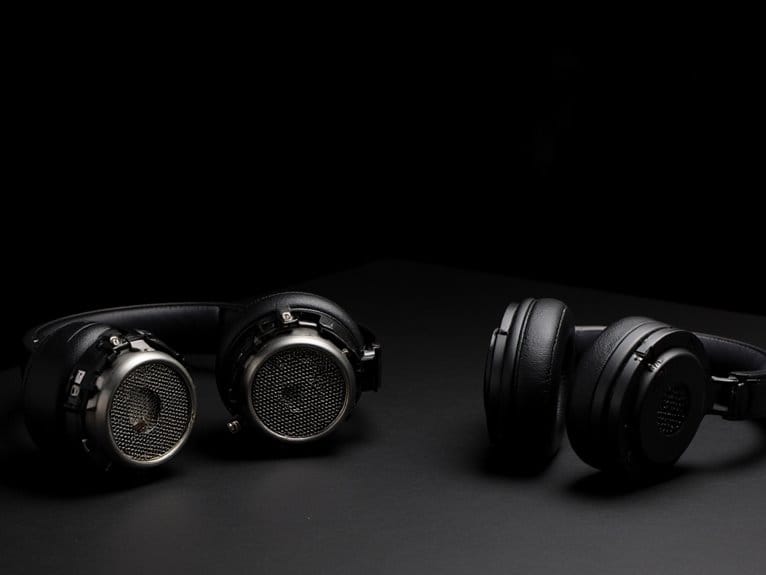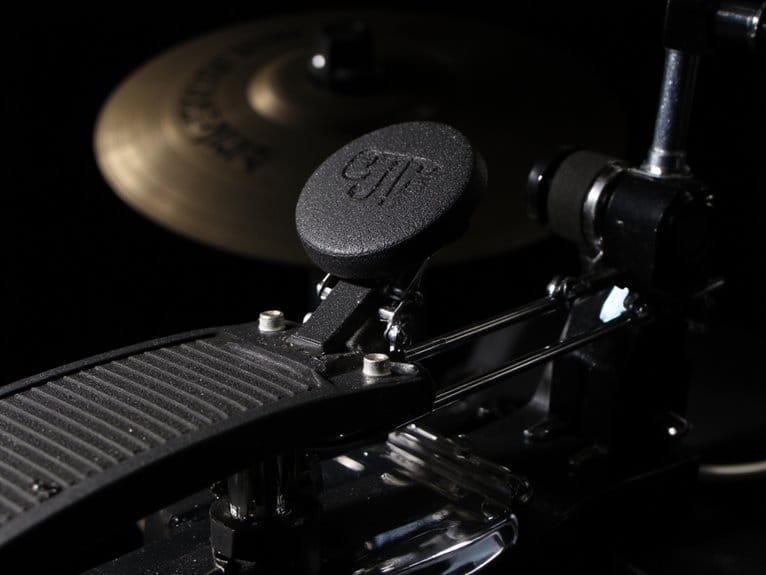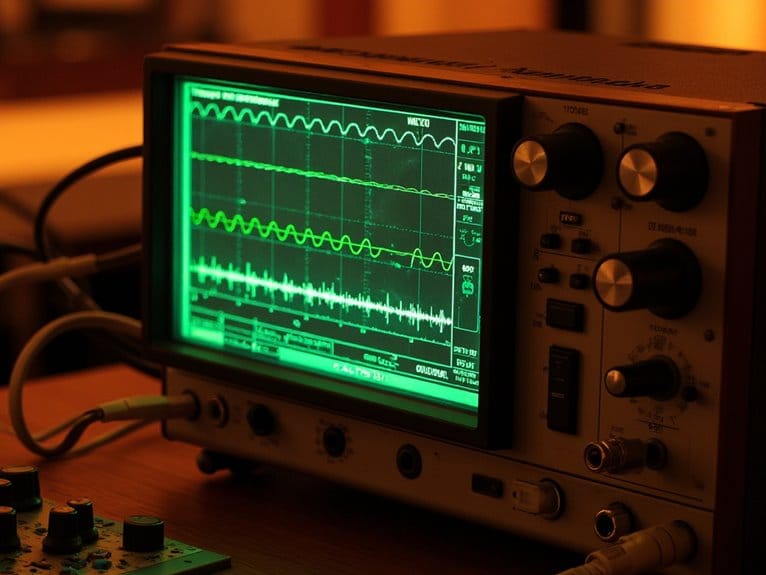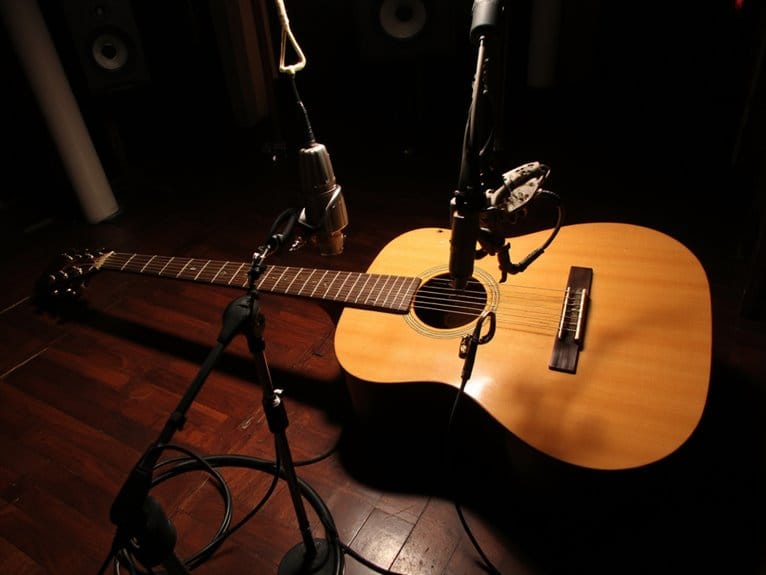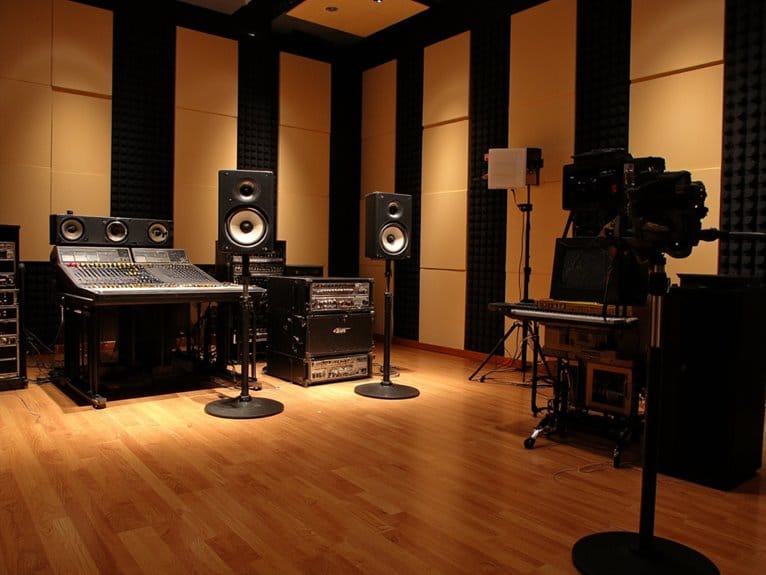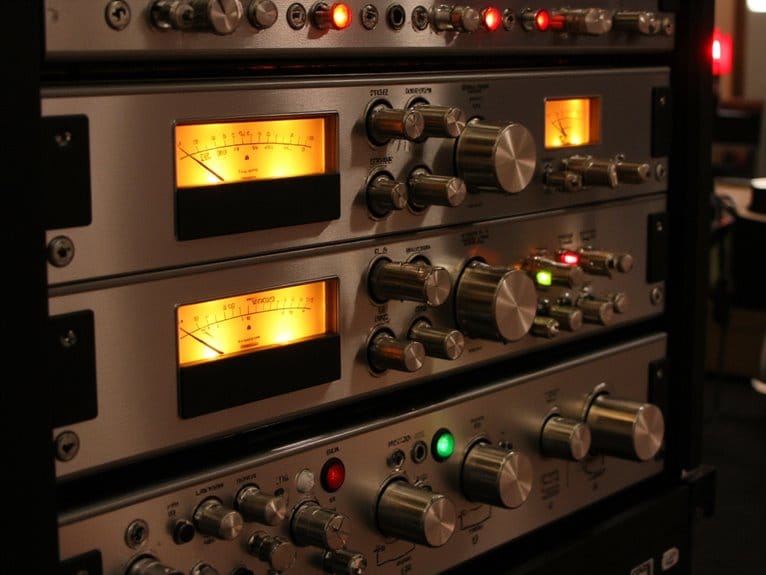Open Back Vs Closed Back Headphones: Complete Comparison
Open-back headphones feature perforated grills that create natural, transparent sound with excellent soundstage but leak audio to your surroundings, while closed-back models use sealed chambers that block up to 95% of ambient noise and contain your music privately. You’ll find open-back designs excel in critical listening and mixing due to their flat frequency response, whereas closed-back headphones emphasize bass frequencies and work better in public spaces or recording studios where isolation matters most, and understanding these core differences will help you choose the right option for your specific needs.
We are supported by our audience. When you purchase through links on our site, we may earn an affiliate commission, at no extra cost for you. Learn more.
Notable Insights
- Open-back headphones feature perforated grills for ventilation while closed-back models use sealed chambers for complete isolation.
- Open-back designs deliver transparent, uncolored audio with flat frequency response, while closed-back emphasizes bass for impactful sound.
- Closed-back headphones block up to 95% ambient noise, making them ideal for public use and shared environments.
- Open-back models excel in mixing and mastering, while closed-back designs are essential for recording sessions and live sound.
- Open-back headphones leak up to 30 dB more sound than closed-back models, creating significant privacy concerns.
Design and Construction Differences
When I first started exploring headphone design, I quickly discovered that the fundamental difference between open-back and closed-back models lies in their ear cup construction, which dramatically affects everything from sound quality to comfort.
Open-back headphones feature perforated grills or mesh materials that allow air to flow freely through the drivers, creating a lightweight design that prioritizes ventilation and breathability during extended listening sessions.
In contrast, closed-back models use solid build materials like plastic, metal, or composites to create completely sealed chambers around the drivers, incorporating additional padding and robust construction elements to achieve total isolation. Closed-back headphones typically feature larger drivers ranging from 40-60mm for enhanced audio quality and superior sound isolation.
This fundamental ear cup design choice influences everything from weight distribution to thermal management, making each type suited for distinctly different listening environments and user preferences. Both designs rely on drivers that convert electrical signals to sound through vibrations, though the housing design significantly impacts how these vibrations reach your ears. Professional models often include rotating ear cups for single-ear monitoring capabilities during mixing and recording sessions. Understanding these construction differences helps with quick learning of headphone characteristics and performance expectations.
Sound Quality and Audio Experience
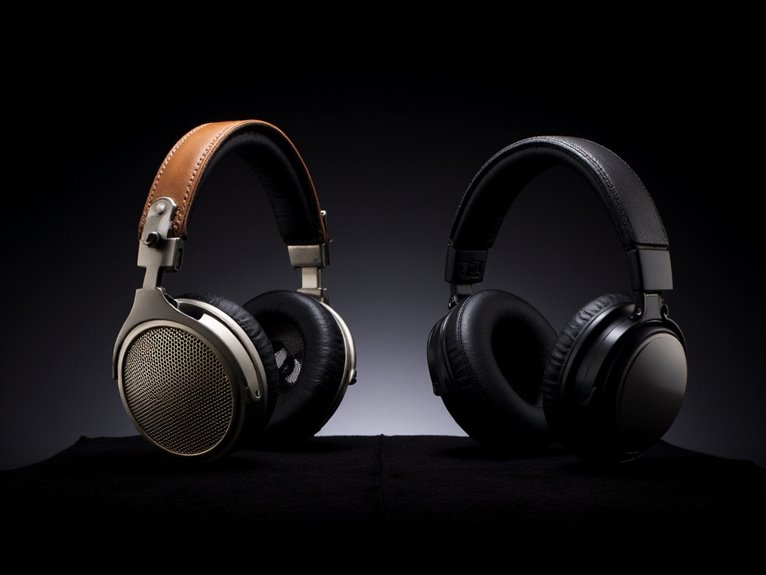
When you’re comparing open-back and closed-back headphones, you’ll notice fundamental differences in how each design shapes your listening experience, particularly in three critical areas that define audio quality.
The natural versus enhanced sound signature becomes immediately apparent, as open-back models typically deliver uncolored, transparent audio that mirrors the original recording, while closed-back designs often emphasize certain frequencies, especially in the bass region, creating a more pronounced, sometimes artificially boosted sound profile.
I’ve found that understanding these sonic characteristics, along with how each design handles stereo imaging width and bass response, helps you make an informed decision based on your specific listening preferences and intended use cases. For professional audio work, open-back headphones provide the transparent, spacious sound ideal for accurate mix decisions, making them the preferred choice among audio engineers.
This difference is particularly noticeable when considering that many closed-back designs utilize dynamic drivers ranging from 8.2mm to 14.2mm to enhance bass response, which can significantly alter the sound signature compared to the neutral presentation typically found in open-back models.
Natural Vs Enhanced Sound
The essence of audio reproduction lies in a fundamental choice between natural authenticity and enhanced articulation, a decision that shapes every listening experience in ways I’ve come to appreciate through years of testing both designs.
Open-back headphones deliver what I’d call a natural experience, reproducing sound as it exists in real acoustic spaces without artificial coloration or emphasis. You’ll hear music exactly as engineers intended, with flat frequency response and spacious soundstaging that mimics live concert halls.
Closed-back models prioritize enhanced enjoyment through deliberate bass emphasis and intimate sound isolation, creating a more impactful, muscular presentation that some listeners find more engaging for casual entertainment, though this comes at the cost of absolute accuracy.
Stereo Image Width Differences
Although natural sound reproduction forms the foundation of quality audio, stereo imaging represents where open-back and closed-back headphones diverge most dramatically in their presentation capabilities.
Open-back designs excel at creating expansive soundstage perception, delivering that coveted “out-of-head” experience where instruments feel positioned in three-dimensional space around you. The perforated ear cups allow sound waves to escape naturally, preventing internal reflections that typically compress stereo imaging in closed-back models.
- Soundstage width: Open-backs create remarkably wider stereo fields compared to closed-back’s narrower presentation.
- Imaging precision: Pinpoint instrument placement and directional accuracy favor open-back designs.
- Spatial depth: Open construction provides enhanced front-to-back layering and dimensional awareness.
- Driver freedom: Unrestricted airflow eliminates cavity resonances that compromise stereo clarity.
- Listener perception: Open-backs foster immersive, concert-like experiences versus closed-back’s intimate containment.
Bass Response Characteristics
Beyond the expansive soundstage differences we’ve explored, bass response represents perhaps the most immediately noticeable distinction between open-back and closed-back headphones, fundamentally altering how you’ll experience everything from thunderous movie explosions to the subtle warmth of acoustic guitar recordings.
Closed-back designs create sealed acoustic chambers that trap sound waves, delivering punchier, more emphasized bass with enhanced dynamic range impact. You’ll notice this warmth particularly in bass-heavy genres where low-frequency emphasis adds satisfying weight.
Open-back headphones, however, allow sound to escape through perforated ear cups, producing flatter, more natural bass frequency responsiveness. While this reduces boominess and maintains accuracy, you’re trading impact for precision, resulting in airier bass that favors critical listening over visceral enjoyment.
Usage Environment and Noise Isolation
When you’re considering which headphones to buy, understanding how noise isolation works becomes essential since your listening environment directly determines whether you’ll enjoy crystal-clear audio or struggle against competing sounds.
Closed-back headphones use sealed ear cups that block up to 95% of ambient noise, making them perfect for public spaces like offices, gyms, and commutes.
Sealed ear cups deliver exceptional noise blocking, creating an ideal audio sanctuary whether you’re working, exercising, or traveling through busy environments.
Open-back designs feature vented grilles that allow environmental sounds to pass through, creating an immersive experience in controlled environments but offering minimal isolation elsewhere.
- Closed-back models prevent sound leakage, maintaining privacy in shared spaces
- Open-back headphones leak audio notably, potentially disturbing nearby listeners
- Sealed designs trap heat and moisture during extended use
- Vented headphones provide superior airflow and ventilation comfort
- Open designs maintain environmental awareness for safety considerations
For maximum noise blocking performance, closed-back headphones with memory foam ear cups create the most effective seal against external sounds.
Comfort and Listening Fatigue
The marathon listening session you’ve been planning depends heavily on physical comfort, and I’ve learned through countless hours of testing that the fundamental design differences between open-back and closed-back headphones create dramatically different experiences when it comes to extended wear. Open-back designs excel in comfort levels due to their ventilated structure, allowing airflow that prevents heat buildup and reduces pressure on your ears. Closed-back models, while offering superior isolation, tend to trap warmth and create tighter sealing that can become uncomfortable during long sessions.
| Comfort Factor | Open-Back | Closed-Back |
|---|---|---|
| Heat Buildup | Minimal due to airflow | Considerable trapped warmth |
| Ear Pressure | Reduced from ventilation | Higher from sealing design |
| Listening Fatigue | Lower from natural sound | Higher from enclosed feeling |
| Extended Wear | More comfortable | Potentially uncomfortable |
These fatigue factors considerably impact your listening endurance.
Frequently Asked Questions
Are Open-Back Headphones More Expensive Than Closed-Back Headphones?
Open-back headphones generally cost more than closed-back due to cost factors like complex engineering and premium materials. You’ll pay extra for superior sound quality and precise acoustic design that targets audiophiles.
Which Headphone Type Is Better for Gaming and Spatial Audio?
You’ll find open-back headphones superior for gaming and spatial audio due to their wider soundstage quality and enhanced comfort levels during extended sessions, though closed-back models offer better precision in competitive environments.
On a final note
You’ll find that choosing between open and closed-back headphones ultimately depends on your specific listening environment, privacy needs, and sound preferences. If you’re seeking that expansive, natural soundstage for critical listening at home, open-back models deliver superior spatial imaging, though they’ll leak sound and offer zero isolation. For portable use, privacy, or bass-heavy genres, closed-back designs provide the isolation and punch you need.

